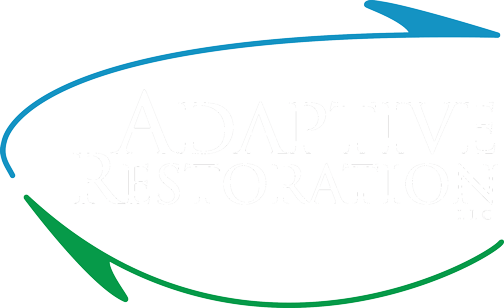Please contact us if you are interested in getting on our burn list.
info@adaptiverestoration.com
(608) 554-0411
What should I expect?
Your burn will be completed by a trained, experienced, and insured crew with all necessary equipment needed to safely conduct a burn and contain the fire. At Adaptive Restoration, we have been implementing burns in southern Wisconsin for well over a decade, and individual crew members bring years of fire experience from as far as Florida, New Mexico and Colorado. We take pride in our diligent and safety-first work ethic.
Adaptive Restoration LLC carries liability insurance that specifically covers burning and we are a member of the Wisconsin Prescribed Fire Council. Unlike other companies that plan for the best-case scenario, our burn crew has federal-level (NWCG) wildland firefighting training, and we have the equipment and expertise necessary to safely implement your burn.
When will you do my burn?
We schedule burns based on desired ecological objectives, site conditions, weather and site-specific constraints. Most burns are completed during the spring or fall seasons. The spring season starts as soon as snow-off and lasts through mid-May. The fall season typically occurs between the time of killing frost and first snow.
Ecological objectives vary from site-to-site and change over the course of the restoration process. On occasion, ecological objectives are dictated by contract, such as a CRP contract.
Weather factors influencing burn conditions include temperature, relative (air) humidity, wind speed, wind direction, atmospheric conditions influencing smoke lift and dispersion, chance of precipitation, sunlight, and air quality among others. These factors all need to occur within desired parameters for a burn to be safe and effective.
Site fuel moisture (moisture of plant material to be burned) is dependent on the types of fuels present and recent weather patterns. Fuel moisture and fuel loading (the amount of fuel) influence fire behavior. Understanding the amount of fuel, fuel moisture and weather, and predicting fire behavior based on these factors influence our decision to burn, or to postpone for a better day.
Other site-specific constraints influence burn timing. These include smoke concerns, permitting, presence of threatened and endangered species, and condition of firebreaks, among others. Once accounting for these, burns are conducted as weather, site conditions and crew availability allow.
What should I expect prior to the burn?
Before implementing a burn, we will ensure that:
preparation and planning is complete, including preparation of a burn plan and map
appropriate local and state permits are obtained, including advance and day-of permissions
neighbors are notified by a landowner or our crew prior to, or on the day-of a burn
paperwork for cost-sharing programs, such as CRP, are submitted and approved
Firebreaks must be installed prior to burning. In some instances, we may install firebreaks day-of burn, however, having firebreaks prepared well in advance of our burn window is the best way to maximize the likelihood of completing your burn when good conditions exist.
How Should I Prepare For My Burn?
How will I know when my burn is happening?
We strive to give as much advance notice as possible. However, burn decisions are ultimately made based on day-of forecasted weather and actual on-site conditions. When we anticipate appropriate site and weather conditions, we may contact you a few days or morning prior to a burn. If desired, you can request additional notice. Flexibility with scheduling improves the chance that your burn will be implemented under desirable conditions
For more information about prescribed burning in southern Wisconsin, visit



